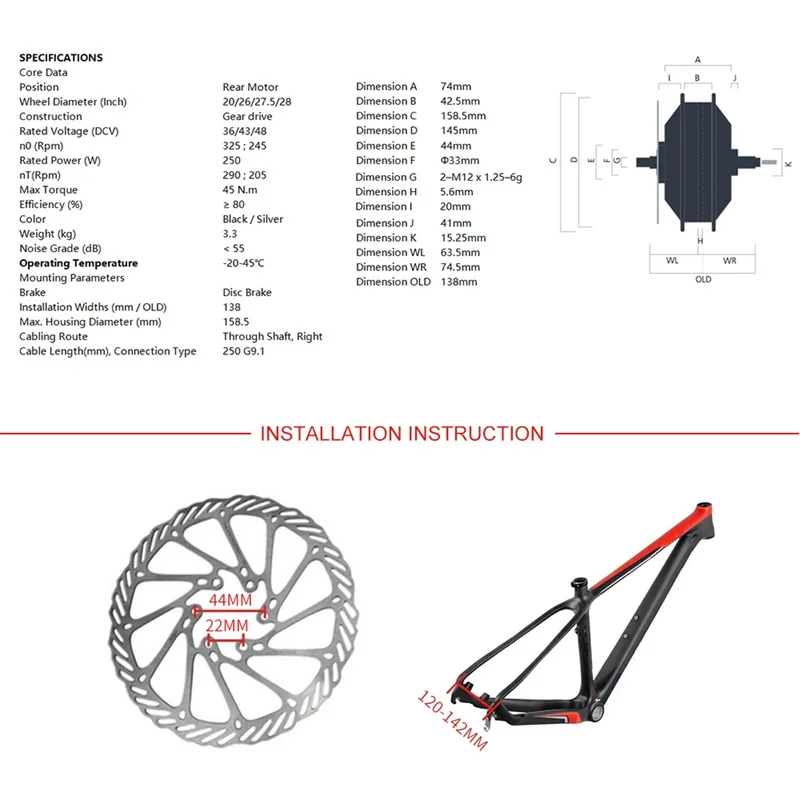Despite what others have suggested, I think this is a pretty bad article that is not fair or balanced. Here's why I think that...
I think this section of the article is not very balanced. What is stated here is true, but not the whole story IMO. A mid-drive motor does wear the chain more quickly, but you can measure and predict that wear. A hub motor is more likely to get a broken spoke, and an unpredictable problem like that is much less desirable IMO. Also, they make hardened e-bike chains these days that wear out much more slowly in high-torque applications. In fairness this article appears to be older than the availability of those chains (I started seeing them in 2017), but that suggests the article may not have been updated sufficiently frequently since then.
I'll take having to buy hardened chains over having to deal with broken spokes. Any day.
This actually seems to be an advantage for mid-drives, since a front hub motor is not an application I would recommend (see below for why). A rear hub motor is not typically also going to be internally geared!

Since more than a few brand name mid-drive e-bikes come with internally geared rear hubs, mid-drives seem to be the ideal motor for those who want to go internally geared.
??? Wattage is not the be-all, end-all. Anyone who has replaced their incandescent lightbulbs with LED lightbulbs knows this. A 10W LED lightbulb will produce more light than a 60W incandescent, despite one being 6x the wattage. Look at the Shimano 6100 motor, it has 25% more range at 20% more torque (!) than the Shimano 6000 motor on the exact same battery. The wattage didn't change, but the internal efficiency did.
Brand-name mid-drives tend to be lighter weight. Most brand name mid-drive city bikes are 40-50 pounds, whereas similarly-specced hub motor city e-bikes often weigh 55-75 pounds. It's possible for a mid-drive e-bike to be more efficient at a lower wattage due to more efficient engineering, less rotating mass, and lighter overall weight. Granted this article is ostensibly talking about hub motor kits vs. mid-drive kits, but some of their statements are more generic than that, and this thread is more generic than that, so I feel it's important to state this lest people apply these statements to OEM mid-drives as well.
I've ridden BionX systems with regenerative braking. Given they were much heavier and less efficient overall, my sense was that the amount of regenerative braking was less than the extra range you'd gain just by switching to a lighter weight and more efficient e-bike. Brake cable adjustment? I think hydraulic disc brakes are the right choice for most people, especially now that they're very inexpensive. And disc brake pads last a long time and are very inexpensive so brake wear is mostly a non-issue, whereas regenerative braking adds wear and tear onto the motor which the article doesn't even discuss. Talking about brake wear without also talking about motor wear doesn't seem fair and balanced.
I've seen multiple fork failures from front motor kits. Forks aren't designed for that kind of weight and torque in the wheel. It's worth remembering that if you have a warranty on your bike, you void your warranty by installing any kind of kit (I've never seen a bike manufacturer that warrants adding an e-kit onto a muscle-motor bike). One of the reasons for this is that the parts aren't designed or engineered for those stresses. A rear hub motor is essentially being held in place by four arms, whereas a front hub motor is only being held in place by two arms which can increase the risk of failure. An e-bike designed, engineered, and warrantied around a front hub motor is a different story of course.
I've seen so many hub motor e-bikes that were inexpensive 7-speed setups (both OEM and kit) that shifted absolutely terribly through no fault of the motor. In general, mid-drive e-bikes tend to be higher-end so tend to shift better, despite the mid-drive motor. Given torque sensing is becoming pretty de-rigeur for mid-drive OEM (and increasingly frequent for kits from what I understand), I think this is the case of an article in need of an update.
It was an interesting article and I appreciate it being shared here. I've bought products from ebikes.ca, so perhaps I'll send an email off to them with my observations about this article needing an update.



